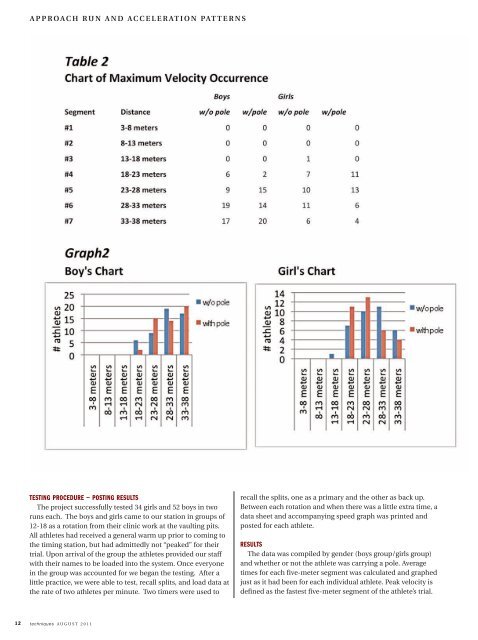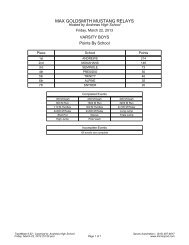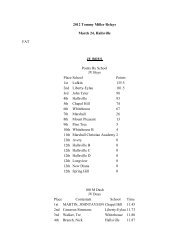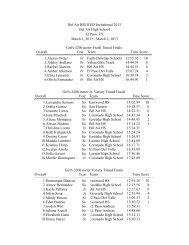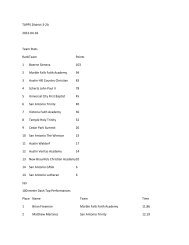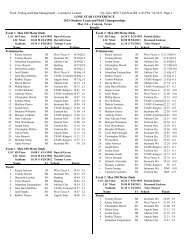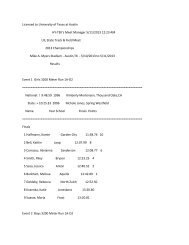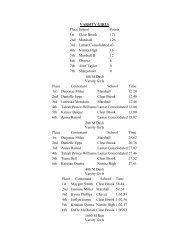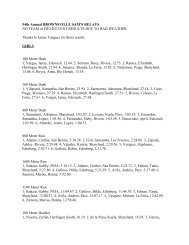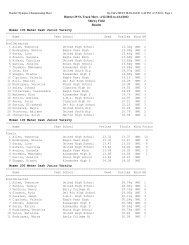1. PAGES 1-35 - Texas Track & Field Coaches Association
1. PAGES 1-35 - Texas Track & Field Coaches Association
1. PAGES 1-35 - Texas Track & Field Coaches Association
You also want an ePaper? Increase the reach of your titles
YUMPU automatically turns print PDFs into web optimized ePapers that Google loves.
APPROACH RUN AND ACCELERATION PATTERNS<br />
TESTING PROCEDURE – POSTING RESULTS<br />
The project successfully tested 34 girls and 52 boys in two<br />
runs each. The boys and girls came to our station in groups of<br />
12-18 as a rotation from their clinic work at the vaulting pits.<br />
All athletes had received a general warm up prior to coming to<br />
the timing station, but had admittedly not “peaked” for their<br />
trial. Upon arrival of the group the athletes provided our staff<br />
with their names to be loaded into the system. Once everyone<br />
in the group was accounted for we began the testing. After a<br />
little practice, we were able to test, recall splits, and load data at<br />
the rate of two athletes per minute. Two timers were used to<br />
recall the splits, one as a primary and the other as back up.<br />
Between each rotation and when there was a little extra time, a<br />
data sheet and accompanying speed graph was printed and<br />
posted for each athlete.<br />
RESULTS<br />
The data was compiled by gender (boys group/girls group)<br />
and whether or not the athlete was carrying a pole. Average<br />
times for each five-meter segment was calculated and graphed<br />
just as it had been for each individual athlete. Peak velocity is<br />
defined as the fastest five-meter segment of the athlete’s trial.<br />
12 techniques AUGUST 2011


